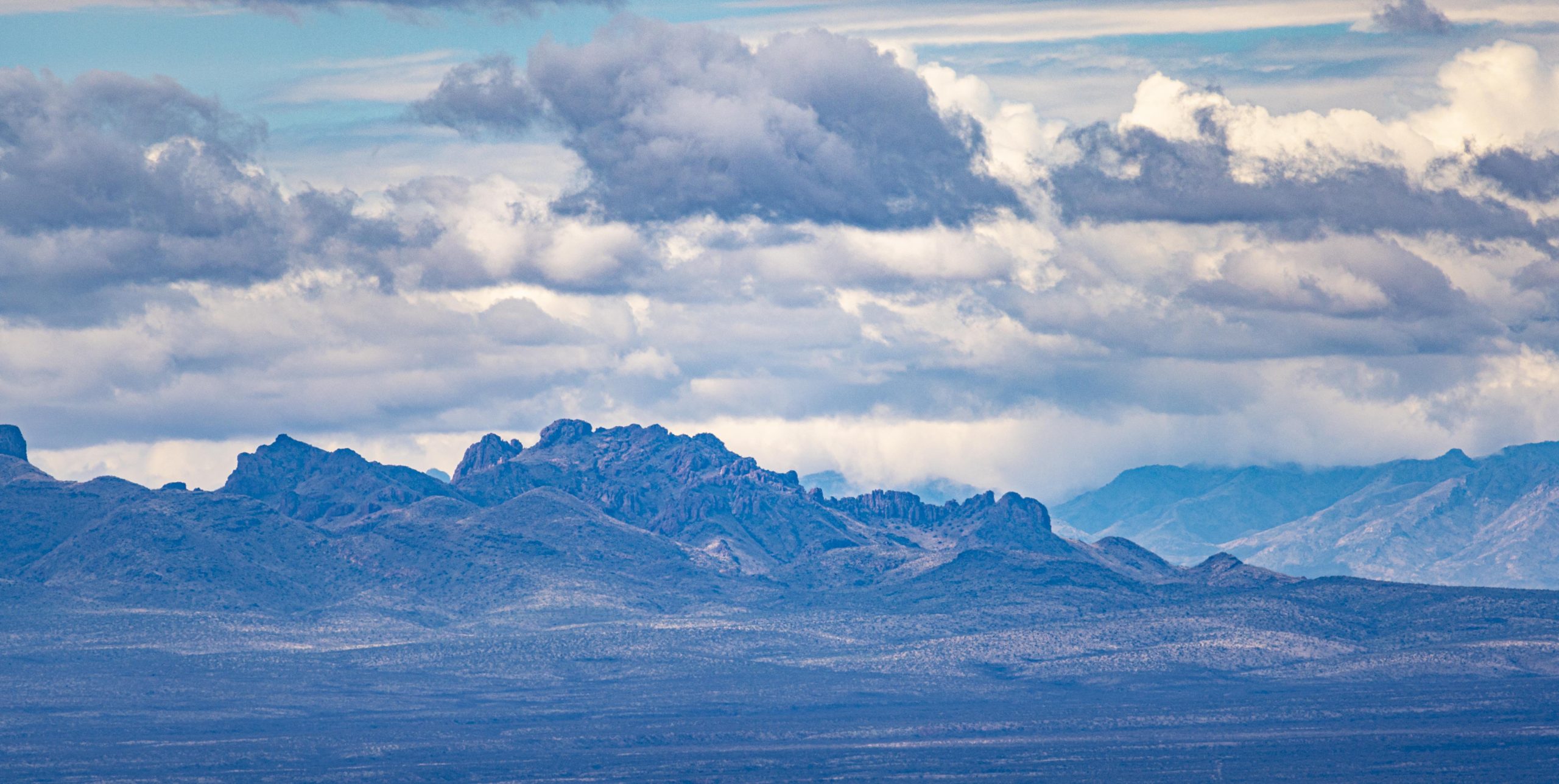February 24, 2020
Lower Florida Canyon is one of the better birding spots locally. It is famous for the Rufous-capped warblers which are year-round residents. Remember- during summer, the canyon can get to be a bit warm. Plan carefully, bird early in the morning and get out before the temperature climbs too high. The climb up the canyon can be daunting as there are two short areas that are steep. You may want to engage a professional guide to help navigate the upper portion of the canyon and find the warblers. Or, just follow some other, knowledgable, birders up the trail.

Lower Florida Canyon

Lower Florida Canyon
To get to Lower Florida Canyon, take Continental Road east from Green Valley to Madera Canyon Road. Continue on Madera Canyon Road (also known as E. Whitehouse Canyon Road on this section of road) and proceed mostly easterly past the Continental School District School for about 10 miles passing through mesquite rangeland. Watch for phainopepla atop mesquite trees along the way. You will arrive at a sharp! right-hand curve which, if followed, takes you directly to Madera Canyon. However, on this trip, you will continue straight onto a dirt road continuation of E. Whitehouse Canyon Road. Watch for roadrunners, meadowlarks and sparrows. After about 1/4 mile the road splits. Keep to the right hand roadway. After another mile or so you will descend into a drainage, keep going and soon you come to another intersection (Road 488) where there is a corral. The corral area is generally a popular spot and good for black-capped gnatcatchers in winter along with all four towhees, crissal and curve-billed thrashers. Continuing east past the corral and in about one mile you will pass an awkward intersection. Soon you will go over a cement creek crossing and arrive at the parking area for the trail. There is a private research center just past the public parking area. From the parking lot take the trail and cross the creek, then proceed along the trail which runs south along the fence line of the research facility. Along the trail you may find black-capped gnatcatchers, northern beardless tyrannulets, pyrrhuloxia, black-chinned sparrows, black-throated sparrows, Lincoln’s sparrows, rufous-crowned sparrows, rufous-winged sparrows, and acorn woodpeckers. There are some areas to explore along the trail that can be quite interesting especially during migration. During summer, look for varied buntings, Scott’s and Bullock’s orioles, black-headed grosbeaks, western, summer and hepatic tanagers. During winter, ruby-crowned kinglets are very common. Verdin are year-round.
The creek can be difficult to cross during and days following monsoon and winter rains. As there are 6 creek crossing necessary to get to the head of the canyon, you might want to get a pair of $30 rubber knee boots at W-mart. The creek is not usually dangerous, but can be impossible to cross without boots, unless you want to get soaked.


Continuing along the trail watch the adjacent steep easterly hillsides for rock wren and canyon wren. The west side of the entire trail from the parking area is mixed woodland which can be productive. You will come to a metal gate which can be a bit finicky. This spot is good for sparrows, gnatcatchers, and tyrannulets.. Pass through the gate and continue down a river-rock strewn trail. Here, you will cross the creek and proceed on the opposite bank into a small oak woodland. There is a well-defined path which splits off here and takes you to the left without having to cross the creek – we will discuss that path in another post – if you come up to a sign with distances to various spots you have gone the wrong way! Follow the path on the west side of the creek and you will find a trail within the oak woodland which leads off to the south. This woodland area often has painted redstart and olive warblers have been noted. If you find yourself at the back gate of the research facility, you have gone just a few feet too far. Continuing south along the trail you will come to a large colorful water tank. Continue past the tank to another creek crossing, then follow the well-defined trail which resumes along the east side of the canyon. After two difficult short sections you will arrive at the dam. The distance from the water tank to the dam is only about 75 yards. I will add a photo of the water tank soon. I have seen and photographed rufous-capped warbler at the dam. The tropical parula, below, was photographed at the dam in 2019.



This is a good spot to begin carefully looking for the rufous-capped warblers. They like steep hillsides with cactus and yuccas. From the dam, the path up the canyon is easier. There are three additional crossings before one gets to the head of the canyon.


The area at the head of the canyon is pretty much bereft of trails, bushwhacking is required. It is not advised to continue much beyond the 6th creek crossing. If you are adventurish, go for it!

Awesome posting, Eric. What a beautiful warbler! This looks like a very good adventure can be had.